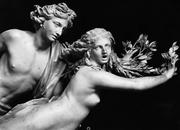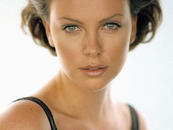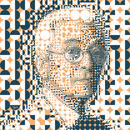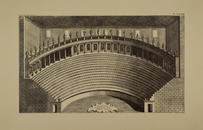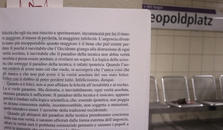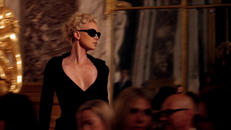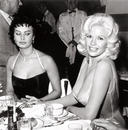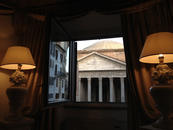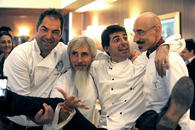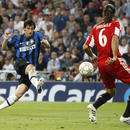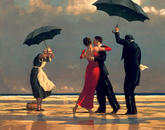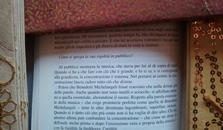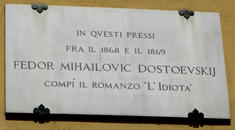In the portfolio, we present a glimpse of work we have accomplished this cold, hard winter: a warm, sunny image of the new Summer 2013 collection of Belvest; advertising campaigns for the 2013 World Champion Philippe Gilbert and Periklis Ilias for DMT; and the new logo and new corporate image of Corte Aura, a producer of excellent sparkling wine inFranciacorta.
It is a misconception, beauty
"Beauty will save the world", claimed the Idiot Dostoevsky, and the phrase has since become a catchphrase. It is a sort of senseless passé-partout, useful in packaging little chocolate and wrapping bows around revolutionary parades. But what are we talking about when we try to define beauty? (I wonder why I think it is one of the words that has become devoid of meaning in modern times, and yet one of which I am most fond).
"A dress worn by certain women for a few years" (Dino Risi)? Or more simply, "the best letter of recommendation" (Aristotle). Or "a trap every man of common sense would be happy to fall into" (Oscar Wilde)? Moreover Bruno Munari warns us: "If you want to know more about beauty, what is it exactly, open an art history book and you will see that every period has its own Venuses and that these Venuses, put together and compared, out of the context of the period, are a family of monsters". Beauty is nothing more than an aspect related to fashion therefore...
I wonder: if great men like the above (yes, Dino Risi wasn’t joking) have understood beauty in this incredibly poor way... am I not wrong (in giving it meaning)?
We all know that beauty can console or disturb, or even the two things together, maybe intermittently, but it is clear that when it comes to beauty you think of something non-essential, an accessory, not decisive. Of course, beauty is never treated with indifference, because it is beauty itself that demands be noticed. Besides its ambivalence, comforting and disturbing, it has been understood since the classical times, when it was divided into Apollonian, bright and harmonious, and Dionysian excited and shocking. Maybe that's why its natural contrast is always something to which we appeal with ambiguity.
But the problem is another, and concerns the hole into which it has been gradually forced: once a word / central concept, it has been increasingly relegated to a sterile adjective. For example: you must have heard someone speak about beauty as opposed to intelligence and goodness, especially if relation to the salient characteristics in a woman (or in a man). As if intelligence and goodness could be contrast with the concept of beauty (and not a component of it!). The externality of the reference has become the only useful parameter in the case of use of the word in question. It has lost all the sense of beauty as a complex organism, remaining, as a residue, that which would be appropriate to call ‘pleasant'... A misunderstanding, or rather, a mess.
On the other hand when it comes to aesthetics (which concerns beauty) we have the impression that this discipline is focused on the superfluous, because basic needs are (seem to be) something else. The same aesthetics that helped popularize this impression, i.e. that fact that its content is a superfluous good. The content of religion, science, philosophy and technique would rather have to do with the necessary goods, the essential.
I protest: beauty is the primary, it is determinant! Beauty is really able to save us, as the Idiot says (very less stupid than he has been led to believe).
One fact remains: it has always been difficult to talk about beauty. The great and controversial poet Ezra Pound in his essay “The Serious Artist” concluded: “You don’t argue about an April wind, you feel bucked up when you meet it. You feel bucked up when you come on a swift moving thought in Plato or on a fine line in a statue.” It is a phrase that describes the difficulty of the ineffable, changing, highly mysterious versatility of the concept so difficult to describe and contain a word.
It is no coincidence Emanuele Severino, with his usual and fearless insight, can speak about beauty as one should, when he compares beauty and the “archaic party”. Why does man celebrate? asks Severino. To find a remedy to the danger of life. The remedy as a party includes that which is is called religion, philosophy, technology, and art: beauty is therefore a fundamental aspect of the remedy. On the contrary: it is the fundamental aspect (and the thing, I admit, I am beginning to like seriously). Citing Plato's Symposium, Severino comes to say that “One wants good for good’s sake good to win against death and this can be accomplished by mortals through the begetting of children, that are a continuation of them. Man is the one who contemplates the truth and by contemplating the idea of beauty is able to deliver what matters most: the true virtues of eternal life. Beauty therefore appears as a the means by which it is possible, both in body the soul, to free oneself of death. In fact, throughout Western history the history of truth is the history of beauty.”
So, for Severino (and Plato) beauty is an essential instrument to arrive at goodness, and it's easy to understand that this concept is different from the other in which beauty is a simple ornament to say true things, and therefore an accessory, superfluous...
In truth Severino goes further, and, moreover, this could not be otherwise for a man who knew how to manage the depth of a field previously unknown: “Beauty belongs to the category of remedy, the last refuge of nature; it is all that will remain after technology will have failed civilization. What does remedy mean? It means faith in the existence of danger; but what is the danger? The danger is risk of becoming, that annihilating fire which the man views as the most dangerous of the dangerous; the concept of the savior is connected to the concept of the remedy and and the concept of beauty.”
Metaphorically embracing that great master of thought and hope in Severino, I conclude with two more graceful quotations from those with which I opened this snapshot: "Beauty has two edges, one of laughter, one of anguish, cutting the heart asunder” (Virginia Woolf); “Beauty is the sign of eternity because it reveals a lack and tells us of expectation" (Francesco Brancato).
18/01/2013 Filippo Maglione


